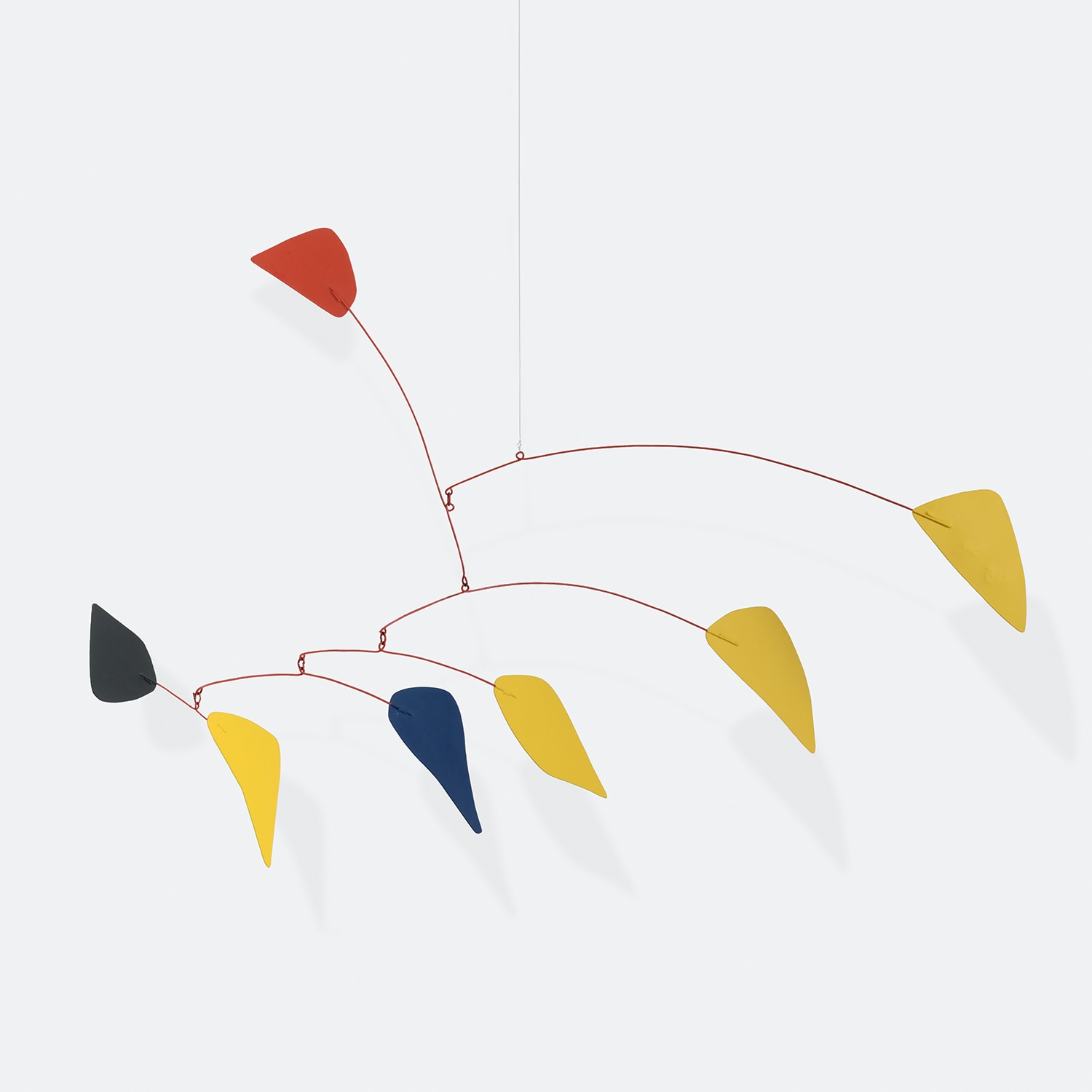

Property of an Esteemed Private Collector
22Ο◆
Alexander Calder
Plutôt jaune
signed with the artist's monogram and date "CA 65" on the outermost yellow element
sheet metal, wire and paint
28 1/2 x 46 x 32 1/2 in. (72.4 x 116.8 x 82.6 cm)
Executed in 1965, this work is registered in the archives of the Calder Foundation, New York, under application number A14002.
Further Details
Full-Cataloguing
Alexander Calder
American | B. 1898 D. 1976Alexander Calder worked as an abstract sculptor and has been commonly referred to as the creator of the mobile. He employed industrious materials of wire and metal and transformed them into delicate geometric shapes that respond to the wind or float in air. Born into a family of sculptors, Calder created art from childhood and moved to Paris in 1926, where he became a pioneer of the international avant-garde. In addition to his mobiles, Calder produced an array of public constructions worldwide as well as drawings and paintings that feature the same brand of abstraction. Calder was born in Lawnton, Pennsylvania.